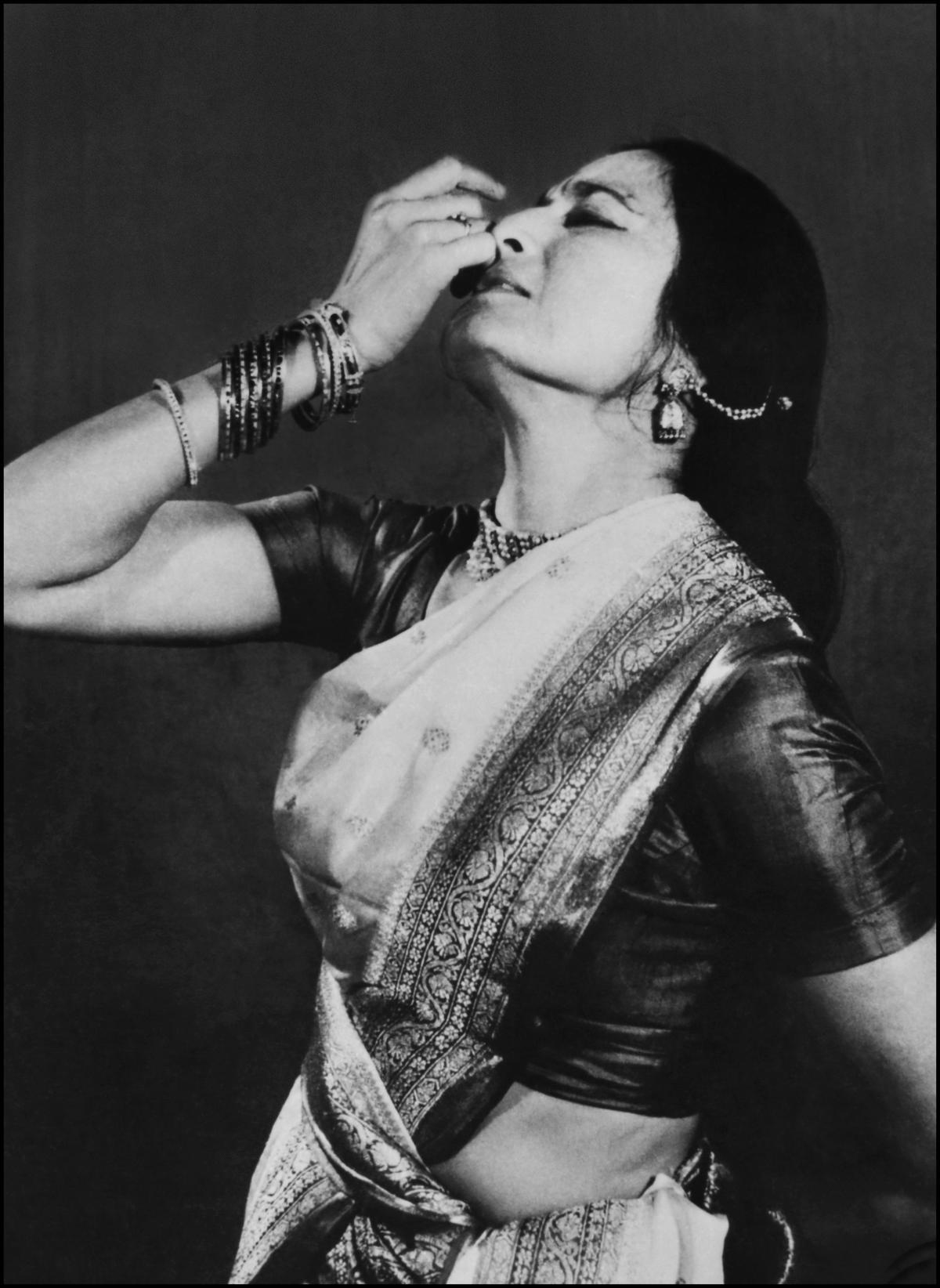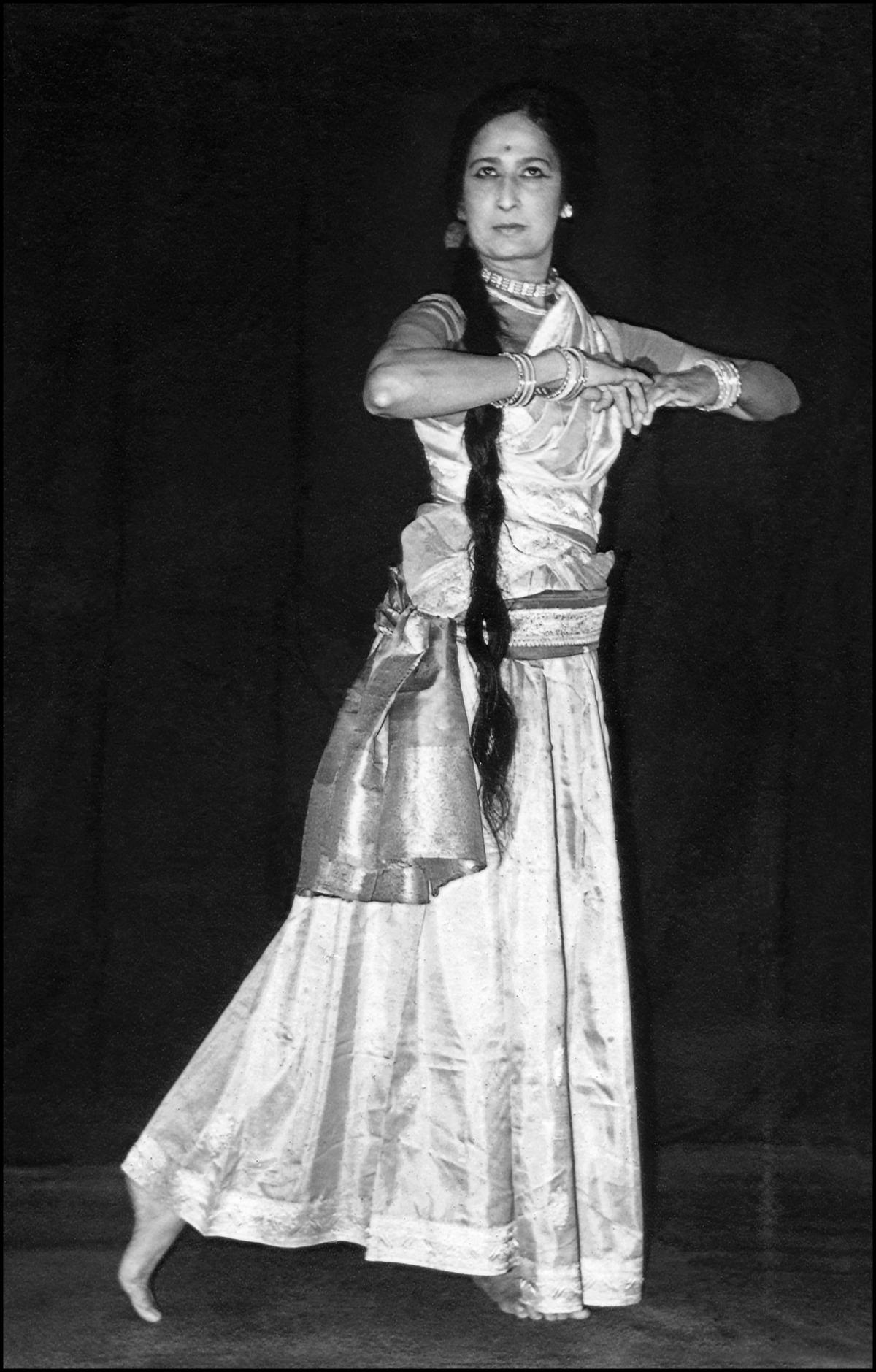As we were heading towards the auditorium, we passed through Rohini Bhate Chowk, a city square named after the legendary Kathak exponent Rohini Bhate on Pune’s famed Pravat Road, which is home to several major cultural and educational institutions like the Film and Television Institute of India. The naming of the city square after an Indian classical dancer like Rohini Bhate reflects the deep admiration and respect that the people of Pune have for their beloved Babytai – as the celebrated dancer, scholar, choreographer, writer and reformist change-maker is affectionately referred to.
The auditorium was buzzing with energy as the inauguration of a two-day event drew near. Half-an-hour before the start of the programme, all 900 seats in the auditorium were filled to capacity. Even on the second day, which coincided with the India – South Africa World cup final cricket match, the turnout was as impressive as the previous day.
Performance by the disciples of Rohini Bhate at the two-day festival NrityaaRohini, in Pune.
| Photo Credit:
Special Arrangement
The occasion was guru Rohini Bhate’s birth centenary year celebrations. Aptly titled ‘NrityaaRohini’, it was hosted by the legend’s disciple Prajakta Raj through her Aarohini Art Welfare Organisation. Prajakta had roped in 11 distinguished disciples of Rohin Bhate, such as Roshan Datya, Neelima Adhya, Amala Shekhar, Prerana Deshpande, Rajashree Jawadekar, Asawaree Patankar, Aabha Wamburkar, Sharvari Jamenis, Rujuta Soman and Maneesha Abhay — who are established and well-known gurus or exponents, and have their own Kathak institutes in Pune. Three more senior dancers – Abha Auti, Dhanashree Natu and Ketaki Wadekar – who follow Rohini Bhate’s legacy were also part of the presentation that witnessed performance by more than 160 dancers.
The evening also featured a special screening of ‘Time and Space’, a captivating film on Rohini Bhate’s life and times, made by her German disciple and a well-known filmmaker Carolin Dassel.

Kathak guru Rohini Bhate, who through her dedicated efforts nurtured Kathak and made Pune a prominent centre for the art form. She was the first in the world of Kathak to use Doha to enhance the emotional depth of dance performances.
| Photo Credit:
Special Arrangement
The thoughtfully curated festival featured 23 rare choreographies by guru Rohini Bhate, a pioneer in Indian classical dance in Maharashtra, who dedicated seven decades to nurture Kathak and establish Pune as a prominent centre of Kathak.
‘Prathama mana omkar’, a Tansen composition choreographed by Rohini Bhate as an invocation to the gods and the gurus, was aptly chosen as the opening presentation of the festival. It was premiered in Africa way back in 1998. A trained musician, Rohini presented outstanding vocal performances and composed music for her choreographies as well. The festival highlighted her expertise in raag, taal and laya in her choreographies.
Raagsagar offered a bouquet of 10 popular raags used in her choreography — Vasant, Bahar, Kedar, Malhar, Sohoni, Adana, Maikaunsh, Lallat and Puria Dhanashree. Furthermore, Chaturag was another unique exploration of musical nuances in Kathak that incorporated four raags —Patadeep, Jhinjhoti, Chandrakauns and Kalavati — along with four taals – Adachoutaal, Ektaal, Matta taal and Teentaal. Similarly, it was delightful to watch two of Rohini’s choreographies named after her favourite deity Ganesh and her first guru Sohanlal – Taal Ganesh and Taal Sohan.

Rohini Bhate during one of her performances. She was known for her groundbreaking works that pushed the boundaries of tradition
| Photo Credit:
Special Arrangement
A gifted artiste with a flair for poetry, music and dance, Rohini Bhate also showcased her creativity in scripting, scoring music and choreographing many memorable productions. One of her remarkable works was ‘Doha’ (rhyming couplets in Hindustani musical tradition), which was staged during the festival, that brought to the fore her unique abilities. She was the first in the field of Kathak to use Doha to enhance the emotional depth of dance performances. . The presentation of a medley of five Dohas by her disciples — Prajakta Raj, Maneesha Abhey, Sharvari Jamenis and Rujuta Soman — depicting the emotions of five different nayikas with profound intensity, left a lasting impact.
Renowned choreographer Rohini Bhate was known for her groundbreaking works that pushed the boundaries of tradition. Her performance of ‘Time’ at a prestigious dance festival in Delhi in 1986 garnered widespread acclaim, setting a new standard for contemporary dance in India.
As a choreographer, Rohini Bhate was known for her groundbreaking works that blended tradition with innovations. In 1986, her production ‘Time’ at a prominent dance festival in Delhi received a standing ovation. It marked a significant moment in India’s contemporary dance scene.
The interpretation of an abstract concept, in a clear and convincing manner, accompanied by German composer Gustav Mahler’s musical composition ‘Fragmented Forest’, was the hallmark of this peerless production that was featured at the centenary celebration. The concept of time was skillfully portrayed as an order, a flow, a fleeing moment, a frozen frame, an inspiration, and as a witness to the passage of time.
During the two-day festival, the productions stood out for the originality of movements, geometrical formations and rhythmic patterns used in the choreographies, none of which were repeated in any other production. None of the patterns were predictable; nor were there any attempts to impress the audience with unnecessary demonstration of spins, as is often seen today.
The festival ended with the choral singing of Vande guru Rohini ke Charne, the most befitting guru-dakshina offered by all the dancers . Aptly titled ‘Aarti’, it showcased their profound love and respect for the revered guru.
As the curtains came down, Neelima Adhye, director, Nrityabharati Kathak Dance Academy in Pune, founded by Guru Rohini Bhate 76 years ago, , remarked, “It seems like she is here with us, today.”
Legends are immortal. They may vanish from this world, but they live on through their enduring legacy. Just like Guru Rohini Bhate.









